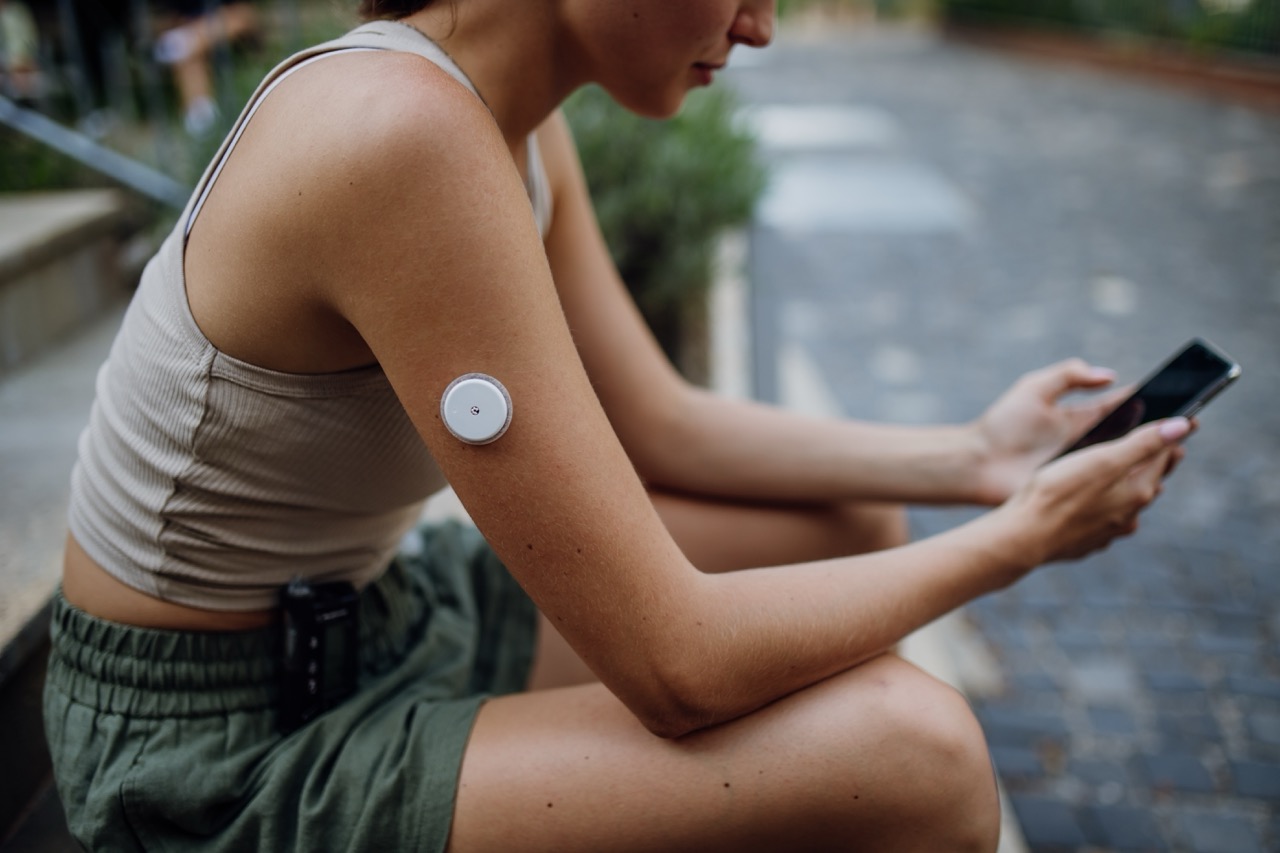Medical Conditions and Mental Health
Living with a medical condition does more than affect the body. It also shapes thoughts, emotions, and daily life. This is known as the physical and mental health link, which means all the systems in the body and the mind are interconnected and constantly influence each other.
Learning about the connection between medical conditions and mental health helps create understanding, reduce guilt, and makes it easier to manage health in a way that focuses on overall well-being.

The Bi-Directional Mind-Body Connection
Doctors and scientists have long studied the link between physical and mental health. When the body fights illness or pain, the brain responds in ways that can affect mood, energy, and thinking. For example, chronic illness often causes stress, sadness, or feelings of frustration. Over time, these emotions can become overwhelming and make everyday activities feel harder.
This emotional strain can also worsen physical symptoms by increasing pain levels, lowering immune function, and making it difficult to sleep well [1]. All of these changes can reduce a person’s overall quality of life.
This process is bi-directional. Unresolved depression or anxiety can make it harder to follow treatment plans, exercise, or eat well, which may negatively impact physical health [2]. For instance, someone with depression may skip medications or stop going to medical appointments. Anxiety can cause worry about health or fear of treatments, leading to delays in care.
As health conditions worsen, feelings of sadness and stress often grow stronger. This cycle continues, creating a pattern that negatively impacts quality of life and makes recovery more challenging.
Recognizing how closely the mind and body influence each other sets the stage for understanding the challenges that come with long-term chronic illnesses and mental health conditions.
Chronic Illness and Mental Health
Many chronic illnesses affect mental health directly, creating stress and emotional strain on top of physical symptoms. Some common examples include diabetes, heart disease, cancer, and chronic pain.
Diabetes
Managing diabetes requires constant attention to blood sugar, medications, and meals. This daily effort sometimes feels overwhelming, placing extra stress on mental health. Eventually, the burden of constant self-management increases the risk of depression.
Research shows that people with diabetes are twice as likely to experience depression as those without the condition [3]. When depression develops, it’s more challenging to focus on the steps that keep blood sugar in a safe range, leading to further complications.
Heart Disease
Heart disease can cause fatigue, chest pain, and fear of future health problems, all of which can take a heavy emotional toll. This added stress may increase the risk of mental health concerns. After a heart attack, many individuals report depression or anxiety [4]. These feelings can interfere with recovery and worsen symptoms.
Chronic Pain
Long-term pain, such as arthritis or back injuries, often leads to sadness and frustration that build over time. Ongoing discomfort can disrupt sleep, drain energy, and limit enjoyable activities, which adds to emotional stress. As these challenges continue, depression may increase pain sensitivity and make it feel even harder to cope [5].
Cancer
Cancer brings physical and emotional challenges. Treatment side effects can lower energy and affect appearance, which may lead to anxiety, low self-esteem, or depressed feelings. Studies estimate that about one out of four people with cancer experience depression [6].
How Mental Health Affects Physical Health
The physical and mental health link works both ways. When mental health suffers, the body also feels the effects in powerful and sometimes surprising ways. These changes may seem invisible at first, but can gradually lead to serious health problems over time.
Research shows that depression often leads to poor self-care, which impacts physical health [7]. A person who is not prioritizing self-care might skip medications, cancel appointments, or stop healthy habits like eating nutritious meals or exercising regularly. Without support, this pattern can cause medical conditions to worsen and quality of life to decline.
Anxiety can also raise heart rate, tighten muscles, and disturb sleep, which slows healing and makes physical symptoms feel more intense [8]. When stress becomes chronic, the constant flood of stress hormones can damage blood vessels, increase the risk of heart disease, and impair memory and concentration [9].
This connection proves that caring for mental health is not just about feeling better emotionally; it is also a valuable part of managing medical conditions and staying as healthy as possible.
Recognizing Mental Health Warning Signs
Anyone facing a medical condition may experience moments of sadness or worry. These feelings are common responses to the challenges of illness and change. However, there are specific warning signs that suggest depression or anxiety is potentially more serious and requires attention.
Warning signs to watch for include persistent feelings of hopelessness or emptiness that last most of the day. A noticeable loss of interest or pleasure in activities once enjoyed can also indicate a more serious mental health concern. Changes in appetite or sleep patterns are sometimes evident, such as eating significantly more or less than usual, or experiencing insomnia or excessive sleep.
Difficulty concentrating, making decisions, or maintaining focus in a way that interferes with daily tasks is also worth addressing. Warning signs also include restlessness, nervous tension, and overwhelming worry. If thoughts of self-harm or giving up appear, seek immediate crisis support.
The Role of Healthcare Teams
When warning signs appear, seeking support that evaluates both physical and mental health is essential. Healthcare teams play a significant role in assessing chronic illness alongside mental health challenges.
During appointments, providers review symptoms related to any physical conditions and evaluate emotional well-being through conversations and screenings for mood, stress, and daily functioning. This comprehensive approach helps identify issues early and guides appropriate treatment.
Resulting care plans may combine medications to manage depression or anxiety symptoms with support from mental health professionals and therapy options.
Some standard treatment options include cognitive behavioral therapy (CBT), which helps change negative thought patterns and build coping skills; Mindfulness-based stress reduction (MBSR), which uses meditation and relaxation to reduce stress [10]; and family therapy, which helps improve communication and strengthens support systems.
Additionally, referrals to community programs, counseling, peer support groups, or stress management workshops can offer ongoing support, guidance, relief, and connection.
Clear communication with and between doctors and mental health professionals allows healthcare providers to create personalized plans addressing physical and mental health, promoting well-being, and improving quality of life.
Building Healthy Habits and Resilience
Effective healthcare involves more than just medical treatments; it also encourages people to take an active role in managing their care needs.
While healthcare teams provide essential guidance and therapies, daily habits and lifestyle choices significantly influence both physical and mental well-being. Building healthy habits and resilience complements professional care by strengthening the body and mind, helping individuals better cope with the challenges of chronic illness and mental health concerns.
Good self-care is an essential part of this process. Even small habits can help improve well-being, build resilience, and support treatment plans. These steps include:
- Eating balanced meals
- Exercising with a doctor’s guidance
- Practicing relaxation, like deep breathing or meditation
- Keeping a consistent sleep schedule
- Limiting alcohol and tobacco
Building and maintaining a strong social support network also makes a big difference in managing both chronic illness and mental health challenges. Knowing someone cares brings comfort, hope, and motivation to keep moving forward.
Supporting Others and Finding Help
Family caregivers serve as essential members of a strong support network, yet many feel unsure how to help loved ones living with chronic illness and mental health concerns. However, simple acts of kindness and understanding often create the most meaningful impact.
Listening without judgment, offering help with daily tasks, or providing meaningful companionship can ease feelings of loneliness and demonstrate that consistent support is available, thereby building trust.
Strong, positive relationships do more than provide comfort; supportive connections also play a role in improving health outcomes. Research shows that a reliable social support system helps reduce stress, encourages healthy habits, and increases motivation to follow treatment plans and stay engaged in self-care routines [11].
Regular encouragement and emotional connection bring hope during difficult times and make it easier to cope with the challenges of chronic illness and mental health symptoms.
Loved ones can further support well-being by learning about the specific health conditions a person is managing. Gaining knowledge about symptoms, treatment options, and potential side effects builds understanding and prepares friends and family to offer practical assistance. Respecting personal choices and allowing space for independence helps maintain a sense of dignity and control.
Consistent check-ins and thoughtful gestures, such as sending a kind message or preparing a meal, show ongoing commitment and concern. Support does not always require grand actions; small, steady efforts can make daily challenges feel less overwhelming and reinforce the feeling of not being alone.
Hope and Healing for Mind and Body
Medical conditions and mental health shape nearly every part of life, influencing how each day feels and unfolds.
Challenges can feel heavy and isolating, but understanding the connection between physical and mental health helps break the cycle of shame and silence that often surrounds these challenges. When emotional wellness becomes part of the treatment plan, mental health recovery feels possible, and daily life feels more balanced and hopeful.
With knowledge, compassionate support, and consistent self-care, the focus on health and wellness shifts to caring for the whole person, mind, body, and spirit together. No step is too small to matter.
Even small changes or moments of kindness taken today can lead to brighter days, stronger resilience, and a more profound sense of well-being ahead.
- Chapman, D. P., Perry, G. S., & Strine, T. W. (2005). The vital link between chronic disease and depressive disorders. Preventing Chronic Disease, 2(1), A14. https://www.cdc.gov/pcd/issues/2005/jan/04_0066.htm.
- DiMatteo, M. R., Lepper, H. S., & Croghan, T. W. (2000). Depression is a risk factor for noncompliance with medical treatment: Meta-analysis of the effects of anxiety and depression on patient adherence. Archives of Internal Medicine, 160(14), 2101–2107. https://doi.org/10.1001/archinte.160.14.2101.
- Anderson, R. J., Freedland, K. E., Clouse, R. E., & Lustman, P. J. (2001). The prevalence of comorbid depression in adults with diabetes: A meta-analysis. Diabetes Care, 24(6), 1069–1078. https://doi.org/10.2337/diacare.24.6.1069.
- Lichtman, J. H., Bigger, J. T. Jr., Blumenthal, J. A., Frasure-Smith, N., Kaufmann, P. G., Lespérance, F., et al. (2008). Depression and coronary heart disease: Recommendations for screening, referral, and treatment. Circulation, 118(17), 1768–1775. https://doi.org/10.1161/CIRCULATIONAHA.108.190769.
- Gureje, O., Von Korff, M., Simon, G. E., & Gater, R. (1998). Persistent pain and well-being: A World Health Organization study in primary care. JAMA, 280(2), 147–151. https://doi.org/10.1001/jama.280.2.147.
- Mitchell, A. J., Chan, M., Bhatti, H., Halton, M., Grassi, L., Johansen, C., & Meader, N. (2011). Prevalence of depression, anxiety, and adjustment disorder in oncological, haematological, and palliative-care settings: A meta-analysis of 94 interview-based studies. The Lancet Oncology, 12(2), 160–174. https://doi.org/10.1016/S1470-2045(11)70002-X.
- DiMatteo, M. R., Lepper, H. S., & Croghan, T. W. (2000). Depression is a risk factor for noncompliance with medical treatment: Meta-analysis of the effects of anxiety and depression on patient adherence. Archives of Internal Medicine, 160(14), 2101–2107. https://doi.org/10.1001/archinte.160.14.2101.
- Roy-Byrne, P. P., Davidson, K. W., Kessler, R. C., Asmundson, G. J., Goodwin, R. D., Kubzansky, L., … & Stein, M. B. (2008). Anxiety disorders and comorbid medical illness. General Hospital Psychiatry, 30(3), 208–225. https://doi.org/10.1016/j.genhosppsych.2007.12.006.
- McEwen, B. S. (2007). Physiology and neurobiology of stress and adaptation: central role of the brain. Physiological Reviews, 87(3), 873–904. https://doi.org/10.1152/physrev.00041.2006.
- Hofmann, S. G., Sawyer, A. T., Witt, A. A., & Oh, D. (2010). The effect of mindfulness-based therapy on anxiety and depression: A meta-analytic review. Journal of Consulting and Clinical Psychology, 78(2), 169–183. https://doi.org/10.1037/a0018555.
- Uchino, B. N. (2006). Social support and health: A review of physiological processes potentially underlying links to disease outcomes. Journal of Behavioral Medicine, 29(4), 377–387. https://doi.org/10.1007/s10865-006-9056-5.
The Clinical Affairs Team at MentalHealth.com is a dedicated group of medical professionals with diverse and extensive clinical experience. They actively contribute to the development of content, products, and services, and meticulously review all medical material before publication to ensure accuracy and alignment with current research and conversations in mental health. For more information, please visit the Editorial Policy.
We are a health technology company that guides people toward self-understanding and connection. The platform provides reliable resources, accessible services, and nurturing communities. Its purpose is to educate, support, and empower people in their pursuit of well-being.
Christine Dayton is a professional health writer with over a decade of experience in geriatric care and wellness, mental health, end-of-life support, and bereavement care.
Shivani Kharod, Ph.D. is a medical reviewer with over 10 years of experience in delivering scientifically accurate health content.
The Clinical Affairs Team at MentalHealth.com is a dedicated group of medical professionals with diverse and extensive clinical experience. They actively contribute to the development of content, products, and services, and meticulously review all medical material before publication to ensure accuracy and alignment with current research and conversations in mental health. For more information, please visit the Editorial Policy.
We are a health technology company that guides people toward self-understanding and connection. The platform provides reliable resources, accessible services, and nurturing communities. Its purpose is to educate, support, and empower people in their pursuit of well-being.


